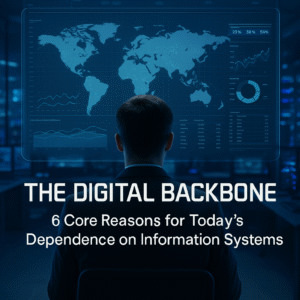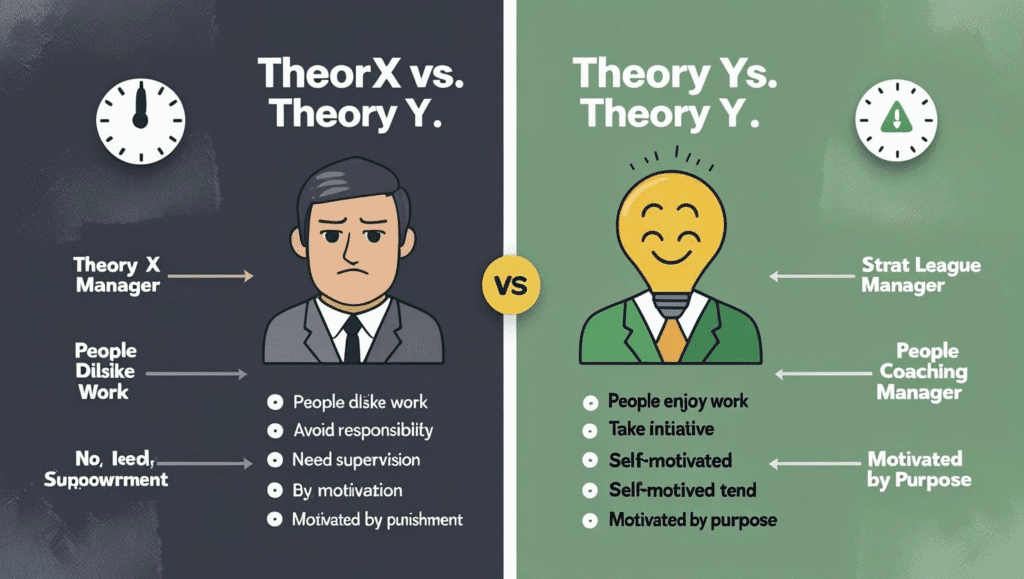The Digital Backbone: 6 Core Reasons for Today’s Dependence on Information Systems
Imagine a global bank, an e-commerce giant, or even a modern hospital attempting to operate for a single day without its IT infrastructure. The result would be chaos. This illustrates a fundamental truth: organizations are no longer just *using* information systems (IS), they are critically *dependent* on them. This dependence is not an accident, but a strategic evolution driven by the relentless pursuit of efficiency, competitive advantage, and survival in a rapidly changing global landscape.
The Key Drivers of IS Dependence
Globalization
Businesses now operate on a global stage with 24/7 expectations. Supply chains span continents, customers are worldwide, and teams collaborate across time zones. Information systems are the only feasible way to manage this complexity, enabling real-time communication, global transaction processing, and synchronized logistics.
Operational Excellence
In fierce markets, efficiency is paramount. IS drives operational excellence by automating repetitive business processes like invoicing and payroll, optimizing resource management through Enterprise Resource Planning (ERP) systems, and reducing costly human error. This leads to lower costs, higher output, and improved productivity.
Competitive Advantage
Information systems have become a primary weapon for strategic differentiation. Companies like Amazon use data-mining IS to create personalized recommendations, while firms like Uber and Airbnb have built entire disruptive business models on sophisticated platforms. IS enables new products, services, and business models that can leave competitors behind.
Improved Decision-Making
The era of “gut-feel” decisions is over. Leaders demand data. IS collects immense volumes of data from all corners of the business and transforms it into actionable intelligence. Business Intelligence (BI) dashboards and analytics tools provide real-time insights, allowing managers to make faster, more accurate strategic choices.
Customer & Supplier Intimacy
Building strong relationships is key to loyalty and profitability. Customer Relationship Management (CRM) systems track every interaction to provide personalized service. Likewise, Supply Chain Management (SCM) systems can create tight, efficient links with suppliers, reducing costs and improving coordination for all parties.
Survival & Compliance
In many industries, advanced information systems are simply the cost of entry. Banks require them for global financial networks, and airlines for reservation systems. Furthermore, government regulations (e.g., financial reporting, health data privacy) mandate secure, auditable record-keeping, a task only achievable through robust information systems.
From Tool to Foundation
The role of Information Systems has transformed from a back-office support tool to the central nervous system of the modern organization. This dependence will only deepen as technologies like Artificial Intelligence, IoT, and Blockchain become mainstream, further weaving IS into the very fabric of business strategy and execution.
Frequently Asked Questions
What’s the difference between Information Technology (IT) and Information Systems (IS)?
Information Technology (IT) refers to the hardware and software—the tools themselves (computers, servers, networks, software). Information Systems (IS) is a broader concept that includes the IT, but also the people, processes, and data that use that technology to create value for the organization.
What is an Enterprise Resource Planning (ERP) system?
An ERP system is a large-scale software platform that integrates all of a company’s core business processes—such as finance, HR, manufacturing, and supply chain—into a single, unified system. This provides a “single source of truth” and improves efficiency across the entire organization.
How do information systems create business value?
IS creates value by increasing productivity, reducing costs, improving the quality of decision-making, enhancing customer service, and enabling new products or strategic advantages. They make the organization more efficient, effective, and competitive.
What are the risks of being too dependent on information systems?
The primary risks include security threats (cyberattacks, data breaches), system failures or downtime that can halt operations, the high cost of implementation and maintenance, and the potential for a “digital divide” where employees lack the skills to use the systems effectively. This dependence necessitates strong security, backup, and training strategies.


